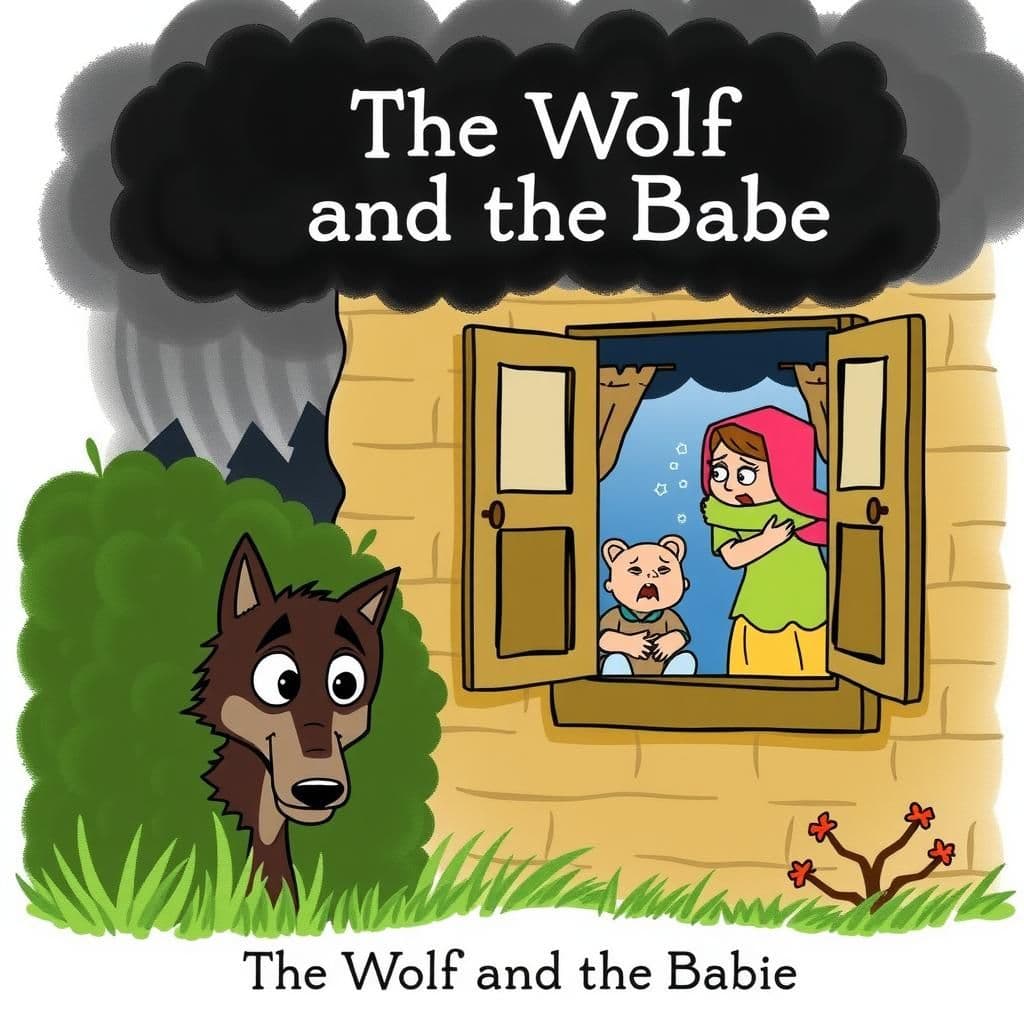The Wolf and the Babe

Story Summary
In the short story "The Wolf and the Babe," a famishing wolf eavesdrops on a mother threatening to toss her child out the window to silence him, hoping for a chance to feast. However, as the day passes, it is the father who returns home and discards both the mother and child instead. This engaging moral tale highlights the unexpected twists of fate and the simple lessons from stories about the consequences of neglect and cruelty.
Click to reveal the moral of the story
The moral of the story is that threats made in anger can have unintended consequences, leading to harm for both the speaker and the subject of their ire.
Historical Context
The story of "The Famishing Wolf" draws on traditional European folklore, where wolves often symbolize cunning and danger, reflecting societal fears about nature and the unknown. This tale echoes themes found in various fables and fairy tales, such as those collected by the Brothers Grimm, where the conflict between humans and predatory animals serves as a moral lesson on caution and the consequences of neglect. The vivid imagery and stark outcomes also resonate with the darker tones prevalent in many folk stories, which were used to convey warnings to children about the perils of the world around them.
Our Editors Opinion
This story highlights the dangers of using fear as a means of control, as well as the unpredictable consequences of our actions. In modern life, this can be seen in a scenario where a parent threatens a child with abandonment or danger to enforce obedience, only to face the repercussions of strained relationships and emotional trauma when their threats become reality.
You May Also Like

The Fox Without a Tail
In this short moral story, a Fox, having lost his tail in a trap, proposes that all foxes should abandon their tails, claiming they are inconvenient. An older fox wisely points out that this advice seems self-serving, highlighting a key life lesson about the distrust of self-interested counsel. This storytelling with morals reminds us to be cautious of simple lessons from stories that may be influenced by personal motives.

The Thistles upon the Grave
In the very short moral story "The Thistles upon the Grave," a Mind Reader wagers that he can be buried alive for six months, using thistles to secure his grave against disturbances. However, after only three months, he emerges to eat the thistles, losing the bet and illustrating the folly of underestimating basic needs. This simple short story serves as a reminder that even the most clever plans can be undone by simple desires, making it a notable example among famous moral stories for class 7.

The Tortoise and the Eagle
In "The Tortoise and the Eagle," a tortoise yearning to fly persuades an eagle to teach her, promising riches in return. However, when the eagle drops her from great heights, she realizes too late that her aspirations were beyond her abilities, leading to her demise. This very short moral story serves as a wisdom-packed reminder for young readers that aspiring for what one cannot handle can often lead to ruin.
Other names for this story
Wolf's Hunger, The Cottage Confrontation, Mother, Wolf, and Child, A Hungry Wolf's Wait, The Wolf's Lurking Shadow, When Wolves Come Knocking, The Window of Danger, The Wolf's Deceptive Feast
Did You Know?
This story highlights the theme of desperation and betrayal, illustrating how the wolf, often seen as the villain, merely capitalizes on the tragic circumstances created by the mother’s threat, ultimately revealing the darker aspects of human nature alongside the predatory instincts of the wolf.
Subscribe to Daily Stories
Get a new moral story in your inbox every day.